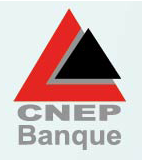The listing on stock exchange market comprises three major phases:
- Pre- listing phase;
- Listing phase;
- Post- listing phase.
- Pre- listing phase
This is the phase preceding the listing on market and the first step to be followed by the issuer in all cases before any operation of listing.
It comprises the following stages:
- Decision of the operation
Only an extraordinary General Meeting of the Company may decide to conduct an operation of public offering, it cannot delegate to the board of directors or directory any power that tends to make it effective.
- Legal preparation of the company and shareholding
The listing of a company on stock market requires scrutiny on the legal level; because the company may have to make changes in status, legal form and structure of capital in order to meet the requirements for admission to listing.
- Evaluation of the Company
The company must conduct an evaluation of its assets by a member of the Order of Accounting experts, other than its auditor , or other expert whose evaluation is recognized by the Commission, unless a member of the latter.
This evaluation will determine the price of sale or issue of the share.
- Choice of an attendant broker or a market promoter for SMEs.
The company is required to appoint a broker-leader whose mission is to assist, accompany and advise it throughout the listing process.
To maximize the chances of underwriting of securities, broker-leader collaborates with other brokers, banks and financial institutions to form the underwriting syndicate which allows wider dissemination of the security through the exploitation of the network of bank branches.
Small and medium enterprise (SME) in turn, shall appoint for a period of five (05) years an attendant counselor called market promoter, responsible for assisting it in the issuance of its securities, in the preparation of operation of admission and continuously ensuring that it meets its obligations to legal and regulatory information.
- Drafting of the information notice project
The Company is required to deliver to the COSOB a project of "information notice" that includes all the details related to activities, financial position, and strategy of the company as well as the characteristics of the issued securities (number, price, legal form ...) .
- Submission of the admission file
The admission file, as defined in COSOB instruction No. 98/ 01 of 30 April 1998 on the admission of securities to trading on stock exchange, shall contain:
- An application for admission;
- Minutes of the competent body that ordered or authorized the issue;
- A project of Information Notice;
- A project of prospectus;
- General information about the issuer;
- Information on funding;
- Economic and financial information;
- Legal documents;
- An evaluation report relating to the issue of shares.
The Company is required to submit to the COSOB a project of "information notice" that includes all the details related to activities, financial position, and strategy of the company as well as the characteristics of the issued securities (number, price, legal form ...) .
- Visa of COSOB
The Commission has a period of two (02) months to review the admission file, and therefore grant or refuse the visa.
- Adherence to the Central Depository
Prior to the listing on stock market, the company is required to join the Central Depository in order to record all its capital in the case of an issue of shares or the amount of the loan in the case of a bond.
- Marketing Campaign
To ensure the success of underwriting of its securities, the issuer launches a marketing campaign via various media (radio, television, newspapers ...) and by distributing prospectuses and information notices through the entire network of agencies of underwriting syndicate.
- Sale of securities
The sale is generally made through the banking network. Investors submit their purchase orders directly to banks, members of the underwriting syndicate, through the filing of an amount representing the value against the number of shares requested.
- Disclosure of results
If the conditions of listing are met, the offer is declared positive and the operation results are made public.
Otherwise, the listing of the security will be refused.
- Denouement of the operation
The denouement of the operation is ensured by the Central Depository of Securities, three (03) working days after the disclosure of results.
- Listing phase
This is the phase where the listing of security starts, as the company had obtained permission (admission decision) of the COSOB to perform its actual entry to market.
SGBV shall publish a notice in the Official Bulletin of the rating (BOC ) indicating the date of the first trading session as well as the issue price of the security .
The results of the first trading are made public by the SGBV and published in BOC .
- Post- listing phase
This is the step that comes just after the first trading of the security on the stock exchange market and its evolution on the market.
- The liquidity contract
In order to regulate the price of shares, companies are allowed to purchase their own shares under the liquidity contract.
The contract is signed between the company and the broker; its purpose is to define the conditions under which the broker acts on behalf of the issuer in the market to promote the liquidity of securities and regularity of their listing.
- Publication of information
Once the security is listed on the market, the issuer must inform the public of any change or material fact likely, if known, to have significant influence on the price of the securities.
Similarly, it is required to make available to public and submit to the COSOB , SGBV and Central Depository of securities all management reports as well as annual and semi-annual financial statements.
































Follow us on